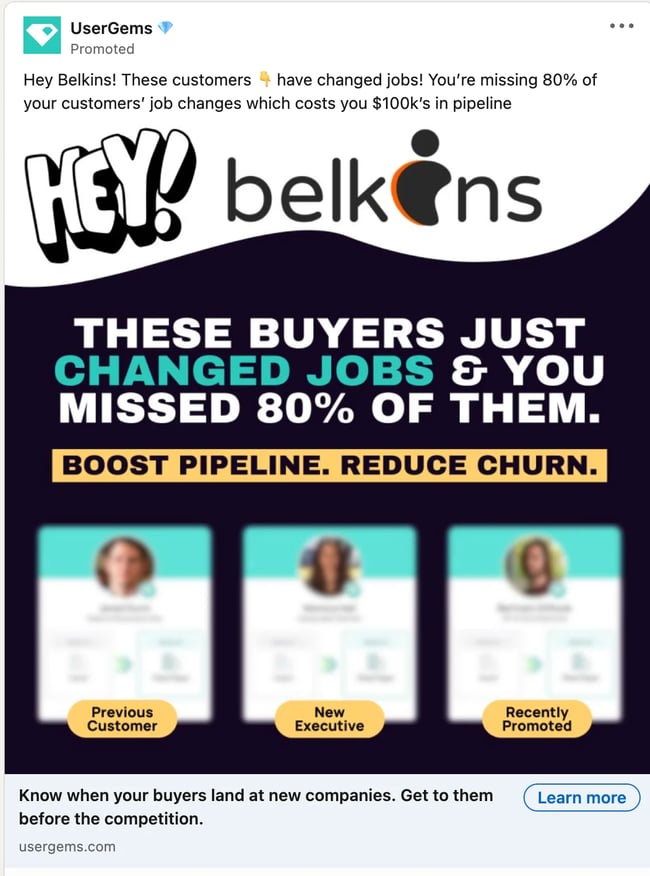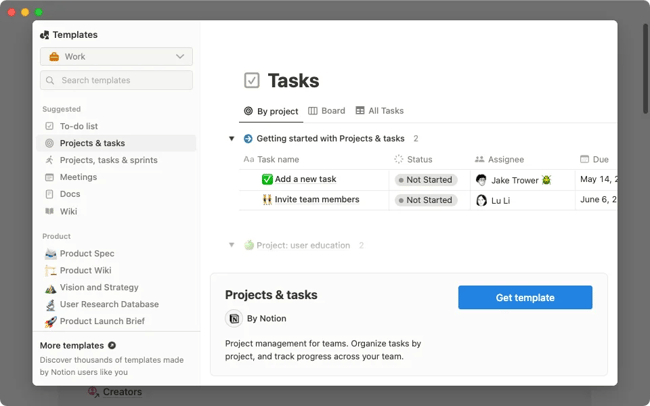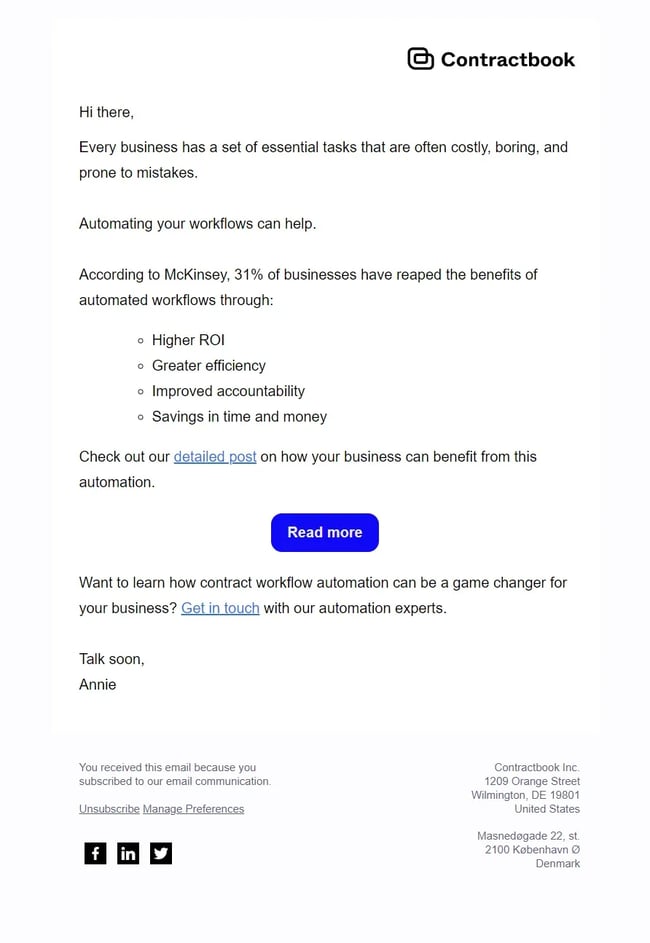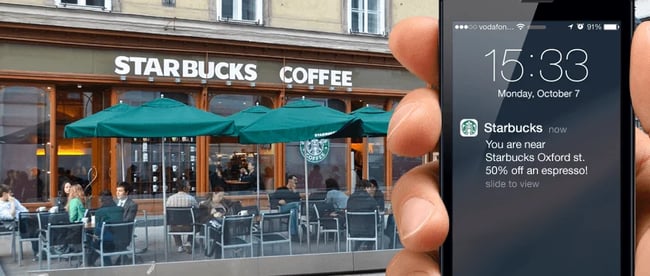Your job is to promote vegan, gluten-free cookies. Your target marketing strategies may include prompting ads on vegetarians and vegans. But the best approach is to pinpoint those who have allergies and stick to some diets and a healthy lifestyle.

The question is how to identify those and what tactics to apply to reach them?Here’s where target marketing comes to a rescue, together with this article.
Discover 11 target marketing strategies that marketers often miss (thoroughly hand-picked) and how they differentiate from traditional marketing.
Table of contents
What is target marketing?
With target marketing, also referred to as target audience or market segmentation, you identify and direct marketing efforts toward a super-specific group of consumers who are likely to purchase a product or service or take a desired action.
Target marketing strives to highly customize marketing communications and offerings to align with the traits and preferences of a specific target segment to click with them and prompt them to take action instantly.
A great example is UnderArmour’s strategy of blending research design with marketing to develop the signature UA HOVR™ cushioned running shoe. By implementing athletes’ real-time feedback, the company iterated the product design so it deeply resonated with their target audience. This led to increased sales, loyal customers, and a 2019 Runner’s World Recommendation Award.
UnderArmour’s marketing and R&D teams made quite an endeavor to design unique shoes and click with its target audience. Not every company needs the same measures. So, let’s first look over common (but fruitful) target marketing tactics.
Common Marketing Strategies Used
The goal of target marketing extends beyond merely selling a product; it involves creating lasting relationships with your most valued audience. To achieve this, marketers can put numerous actionable strategies into practice.
1. Segmentation
Segmentation is categorizing the audience into groups based on shared characteristics like age, location, or interests to address specific segments' unique needs and pain points.
Example: Consider a company that is selling food for labradors. If they target all dog owners instead of Labrador owners, the interest-based segmentation will be broad, and the business will miss out on potential consumers while burning marketing budgets.

2. Positioning
Positioning is when the marketing message caters to the target audience’s perceptions and needs. It aims to create a unique perception of a product or brand that sets it apart in the marketplace.
Example: A tech company positions its new watch as a luxury device with high-end features and wants to compete with well-established premium brands. However, the company uses messaging that contradicts the essence of luxury.
The advertisements contain terms like “affordable,” “budget-friendly,” or “sale.” Consequently, the campaign falls short due to a misalignment between the pre-defined positioning and actual messaging, thus confusing potential customers.
3. Personalization
The process of creating individualized content and interactions for different customer segments. It requires a deep understanding of customer behavior to deliver a truly personalized experience.
Example: Think of an e-commerce website that uses customers’ browsing history to send product recommendations. A customer is browsing gift options for a friend with no intention of buying it. The company misinterprets the customer intent and indicates personal interest rather than a one-time search for a gift.
Based on a single interaction, this assumption leads to persistent follow-up emails with similar product recommendations. Not surprisingly, it irritates the customer, creating a sense of discomfort. From a business perspective, the follow-up campaign results in a low ROI.
4. Behavioral Targeting
A marketing tactic that uses consumer behavior data, such as browsing history, purchase patterns, and other online interactions, to customize marketing messages and offerings to prompt ads with the right message at the right time.
Example: An online jewelry retailer is employing behavioral targeting to reach new potential customers based on their online behavior. A user, named Alex, is browsing engagement rings to find the perfect one.
The system indicates that the user wants to get engaged and sends him numerous targeted ads, promotions, and emails featuring diamond engagement rings. This could lead to an effective marketing campaign, as Alex is not the intended recipient or the target audience.
5. Geo-Targeting
A marketing strategy that considers factors such as local preferences, individuals’ geolocation, and regional events and allows businesses to tailor their marketing efforts to specific regions.
Example: A winter gear retailer produces snow jackets, boots, and accessories. The company decides to implement a geo-targeting campaign to boost sales during the winter season. However, inaccurate geo-targeting reaches people in diverse climate regions. This leads to confusion and wasted marketing resources as winter gear promotions are irrelevant (or less relevant) to residents in warmer climates.
6. Retargeting
Retargeting is when ads target users who have previously interacted with a brand. Its goal is to re-engage these users through personalized ads, move down the funnel, and convert them into customers.
Example: An online shoe retailer is implementing a retargeting campaign to re-engage users who abandoned their carts. A user, let's call him David, browsed the website for running shoes and added one to a cart but decided not to buy anything at that time.
The retargeting campaign assumes that David is ready to make an instant purchase and bombards him with the same running shoe ads across diverse online platforms. However, it fails to address the user at different stages of the conversion funnel, as David might have been in the initial research phase during the first interaction.
11 Missed Target Marketing Strategy Opportunities
Ad spending in digital advertising is projected to reach $679.8 billion in 2023. So there is too much juice in target marketing. This section will cover how marketers from different companies catch up on opportunities that often get overlooked.
Learn from real-life examples.
1. Couchbase’s data-backed content strategy.
Account-based marketing (ABM) is a strategic method within target marketing, concentrating on personalized and targeted interaction with particular high-value accounts or customers. Unlike more general marketing approaches, it is extremely customized and seeks to establish a more individualized relationship with each account.
Case study: Couchbase is an enterprise-class NoSQL solutions provider. The company was competing with SQL and no SQL providers that were already established in the market.
To overcome the challenge, Couchbase implemented a data-based ABM strategy, combining real-world behavior with research-generated social personas. By merging customer behavior with the personas of their existing customers, they were able to create content that was tailored to their target accounts. This approach generated $1.5 million in pipeline opportunities.
2. Dynamic content in UserGems’ advertising.
Deploying dynamic content in digital advertisements involves tailoring the displayed information based on the viewer's characteristics or behavior. Apart from HubSpot, I also create senior-level content for Belkins, a lead generation agency, as highlighted on my LinkedIn profile.
This drew the attention of UserGems, and apparently, Belkins aligned with their ideal customer profile (ICP). Subsequently, both my colleagues and I at Belkins were exposed to these personalized ads featuring dynamic elements such as a customized logo, first names, and company names.

With LinkedIn Dynamic Ads, you can create automatically personalized ads featuring each professional’s own LinkedIn profile data, like photos, company names, job titles, and more. This allows sending highly-targeted messages and introducing and familiarising your business with your target audience. You can launch the campaign, track its effectiveness, and optimize results directly in the Campaign Manager.
3. Netflix uses predictive analytics to keep users on the platform.
Using historical data, machine learning algorithms, and artificial intelligence, predictive analytics identifies patterns to predict future actions and preferences of customers. Through predictive analytics, real-time customer data can be utilized to customize marketing strategies and deploy personalized ad campaigns on a large scale.
Case study: Netflix employs AI-powered algorithms to make predictions based on user watch history, search patterns, demographics, ratings, and preferences.
Through the examination of extensive user data, the premier streaming service offers personalized content recommendations. These predictions boast an accuracy rate of 80% in anticipating what content the user may want to watch next. Additionally, Netflix utilizes predictive analytics to pinpoint content genres, themes, or specific shows with significant demand or potential popularity.

This approach helped Netflix make informed decisions and allocate resources to projects that gained immense popularity among viewers. As of 2023 Q1, the California-headquartered media giant has over 247.15 million paid subscribers worldwide.
4. Notion micro-segment customers for highly customized ads and user experience.
A strategic tactic focused on subdividing the market into smaller, highly specific segments for extremely targeted campaigns. The variables involved in micro-segmentation include demographics, product usage, purchasing behavior, and other situational factors, such as social and time factors, buyers’ mood, etc.
Case study: Notion is a note-taking software platform that micro-segments its users and creates highly customized templates for them. By categorizing customers according to their industry, company size, and job profile, it offers templates for different use cases.
Moreover, you can create a customized note-taking template depending on whether you are in the design, marketing team, or engineering department.

5. Content syndication in ABM by Cognism.
Content syndication revolves around distributing and promoting content to a broader audience outside the company’s channels. Blogs, websites, or newsletters are the most common channels for it.
In ABM, companies first identify and prioritize high-value target accounts. The next step is to develop content specifically for the identified target accounts. Content syndication also involves partnering with third-party platforms or publishers to distribute the tailored content. This ensures that your content reaches the decision-makers in your target accounts so you can build sturdier relationships with stakeholders within organizations.
Case study: Cognism is a premium sales intelligence software. At some point, the company faced challenges when trying to scale marketing and enablement support for its rapidly growing sales team. As a solution, they partnered up with Seismic to save marketing time by swapping out customized decks for an easily curated digital experience.
Seismic’s Digital Sales Rooms allow sales reps to pull in relevant content for what buyers care about most and simplify the process of accessing branded materials and personalizing presentations. Furthermore, Seismic keeps sellers updated on the latest product updates or new releases, ensuring that they stay relevant and effectively sell the company offerings. All of these efforts resulted in 99.5% product marketing content utilization by sales agents.
Watch more about Digital Sales Rooms to align marketing and sales teams.
6. Informa Markets reduced CPC by 18 times with intent-based targeting.
Identify customer data with intent signals, which may include search queries, website visits, and overall browsing history. The objective is to show tailored advertisements when buyers are most inclined to make a purchase.
This type of targeting is mostly focused on external data. Businesses can gather such data from intent-based marketing tools, such as Leadfeeder, Bombora, KickFire, etc. These tools track user data for search engines and visited websites and display ads for products you search for online. Another way to get intent data is to monitor product reviews, web traffic analytics, etc.
Case study: Informa Markets connects buyers and sellers by creating platforms for them to trade, innovate, and grow. The company struggled to find leads with the right intent, so they implemented Bombora’s third-party Company Surge® Intent data to identify accounts researching relevant intent topics.
With it, they narrowed down their huge list of contacts by which businesses are currently interested in relevant Intent topics and which are not. As a result, Informa accomplished 10 times higher CTR on their intent-driven campaign and reduced the CPC costs by 18 times.
7. Personify’s targeted ad campaigns increased engaged website visitors.
Targeted ad campaigns are designed to connect with particular segments through relevant content and messaging. When it comes to publishing target ads, businesses can choose from various channels, including incorporating offers in email newsletters and initiating advertising campaigns on social media platforms like Facebook, Instagram, etc. Another way is to showcase ads on the Google Display Network.
Case study: Personify is a market-leading constituent management and engagement (CME) platform. The company wanted to build an account-based program as they found that traditional demand generation tactics weren’t working for Personify’s target market.
They teamed up with Rollworks to import their target account lists. Then, by using Rollworks’ data and machine learning capabilities, they managed to target key decision-makers across channels and devices. Next, they set up a series of digital ad campaigns that were personalized based on company, persona, sales stage, and more. This resulted in a whopping 39 times increase in engaged website visitors.
8. AirBnB's behavioral email triggering.
Behavioral emails are sent automatically to subscribers when specific conditions are met. Triggers include viewed products, abandoned carts, watched videos, etc. Instead of one-size-fits-all emails, this approach tailors email communication based on user interactions, preferences, and engagement history.
According to ZeroBounce, 25% of email users never check the “Promotions” tab. The same research shows that 15% of the respondents never check their spam folders. Given these, behavioral email triggering allows businesses to send emails to customers exactly at the time they want or need something. This contributes to higher email open rates and clicks.
Case study: Airbnb tracks customer behavior and identifies accounts that indicate booking-ready behavior. These are accounts that are actively searching for listings, reading reviews, browsing images, etc. As a direct result of such behavior, the company sends a behavioral email one day after a customer views the listing but doesn’t complete a booking.
The email contains the same listing the customer viewed one day earlier, as well as other relevant listings within the same price range and location. The personalized offer drives more engagement and lets customers come back to the listing where they left off.

9. Contractbook's multi-touchpoint drip campaigns.
Multi-touchpoint drip campaigns are automated marketing sequences strategically created to engage and nurture leads or customers over an extended period. The sequence of messages is predetermined and triggered based on user actions or predefined timelines.
By providing timely and relevant content, these campaigns guide leads through the customer journey and spark opportunities for engagement at different stages. You can create and send email drip campaign sequences with the HubSpot Sales Hub.
Real-world example: Contractbook uses drip campaigns to gradually engage accounts and nurture their interest. In the example below, they send the first email and invite prospects to check out a detailed post on a relevant topic.

After the first email, Contractbook sends a series of short emails, including one that invites their audience to schedule a demo.

10. Starbucks's geofencing for localized marketing.
Geofencing is a location-based marketing strategy used to deliver specific messages, promotions, or ads to individuals in designated areas. This strategy utilizes GPS (Global Positioning System), RFID (Radio-Frequency Identification), Wi-Fi, or cellular data to recognize when a user’s device enters or leaves the defined geographic zone.
Location tracking marketing also impacts local SEO. With 87% of customers evaluating local businesses on Google before making a purchase, it helps companies improve their local SEO by providing accurate and up-to-date location information for their business listings.
Real-world example: Starbucks uses geofencing to advertise its drinks effectively. They send push notifications whenever customers are close to a Starbucks shop. To make the campaign more engaging, they reward users with stars and badges for visiting different stores.

11. Casper’s innovative content strategy.
In this content-is-king era, capturing audience attention and standing out from competitors requires a creative and forward-thinking approach. Key components of an inventive content strategy involve engaging the audience through interactive elements like quizzes, polls, surveys, and dynamic infographics, as well as exploring possibilities in virtual or augmented reality.
Case study: Casper, a mattress retailer, achieved remarkable success, reaching $750 million in just four years by adopting an innovative content strategy. They revolutionized the mattress world by introducing the concept of a “mattress in a box.”
As the name suggests, you get a mattress box. Then, you remove it from its plastic packaging and allow it 45 minutes to an hour to regain its original shape. Not surprisingly, it became a trend, and buyers started uploading unboxing videos on YouTube.
Additionally, they created ToFu content that’s fun and humorous — without being salesy. Interestingly, rather than asking for an email address on their website, Casper incentivizes you to submit a survey about your sleeping habits, offering a $25 discount as a reward.
Use Targeted Marketing Strategies to Your Advantage
Show your customers that you care about their experience and their needs. Not only will they feel loved, but you will increase your chances of conversion by matching the right people to the right content at the right time.
Editor's note: This article was originally published in March 2013 and has been updated for comprehensiveness.
![Download Now: Free Marketing Plan Template [Get Your Copy]](https://no-cache.hubspot.com/cta/default/53/aacfe6c7-71e6-4f49-979f-76099062afa0.png)




![Lead Generation Content: Top Types to Use in 2023 [Data + Expert Tips]](https://blog.hubspot.com/hubfs/lead%20generation%20content.webp)
![Why You Still Need SMS Marketing & How to Get Started [+Data]](https://blog.hubspot.com/hubfs/Why-you-need-sms-marketing.webp)
![Gated Content: What Marketers Need to Know [+Examples]](https://blog.hubspot.com/hubfs/UNGated%20Content.png)


![What Is Demand Generation? [FAQs]](https://blog.hubspot.com/hubfs/what-is-demand-generation.jpeg)

